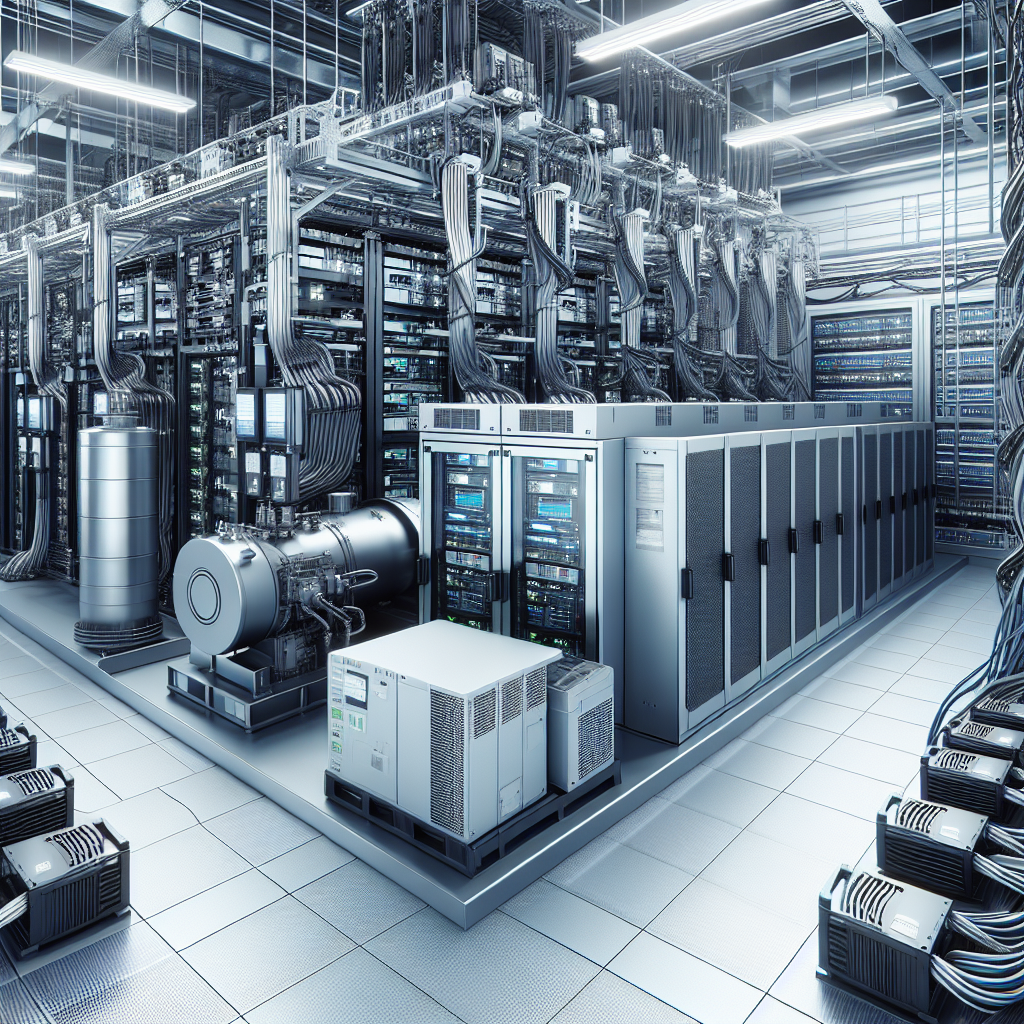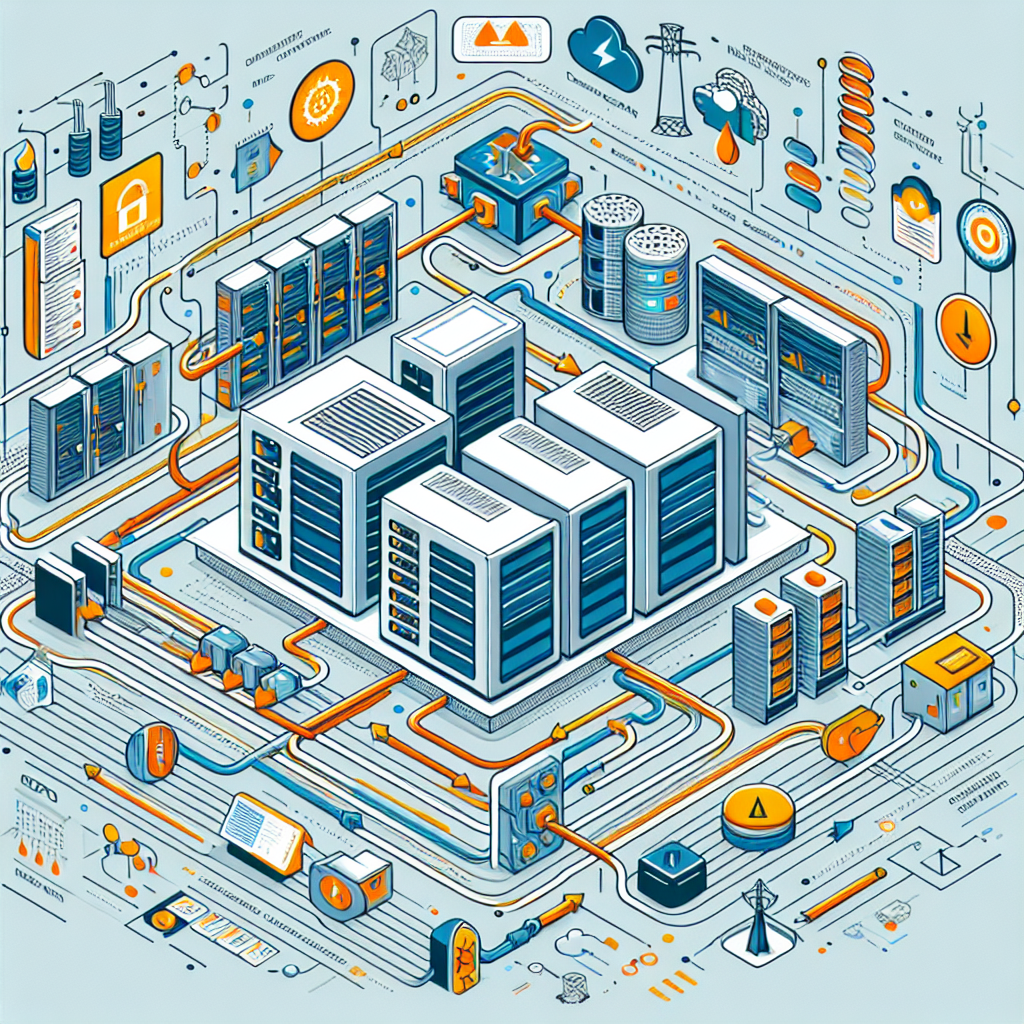Your cart is currently empty!
Tag: Redundant

Understanding the Benefits of Redundant Generators in Data Center Operations
Data centers play a crucial role in today’s digital age, serving as the backbone of countless businesses and organizations. These facilities house and manage the vast amounts of data that power our increasingly connected world. As such, ensuring the uninterrupted operation of data centers is essential to maintaining business continuity and preventing costly downtime.One of the key components of a reliable data center is a redundant power supply system, which includes redundant generators. Redundant generators are backup power sources that can automatically kick in when the primary power source fails. This redundancy is critical in ensuring that data center operations can continue uninterrupted in the event of a power outage or other electrical issues.
There are several key benefits to having redundant generators in data center operations. The most obvious benefit is increased reliability and uptime. By having backup generators in place, data centers can continue to operate even when faced with power failures, ensuring that critical systems remain online and data remains accessible.
Redundant generators also provide a level of flexibility and scalability to data center operations. As data center needs grow and evolve, additional generators can be easily added to meet increased power demands. This scalability allows data center operators to adapt to changing requirements without risking downtime or disruptions to service.
In addition to increased reliability and scalability, redundant generators can also help data centers save on costs in the long run. While the initial investment in redundant power supplies may be significant, the cost of downtime due to power outages can far outweigh this expense. By investing in redundant generators, data center operators can minimize the risk of costly downtime and potential losses in revenue.
Overall, redundant generators play a critical role in ensuring the reliable operation of data centers. By providing backup power sources that can automatically kick in during emergencies, redundant generators help to maintain uptime, flexibility, and cost-effectiveness for data center operations. In today’s digital landscape, where data is king, investing in redundant generators is a smart choice for any organization looking to ensure the continuous operation of their critical systems.

Mitigating Risks: Strategies for Redundant Power Distribution in Data Centers
In today’s fast-paced digital world, data centers play a crucial role in storing, processing, and managing vast amounts of information. As such, ensuring that data centers are equipped with reliable power distribution systems is essential to prevent downtime and ensure uninterrupted operations. One key strategy for mitigating risks in data centers is implementing redundant power distribution systems.Redundant power distribution involves having multiple power sources, paths, and components in place to ensure that in the event of a power outage or failure, critical systems and equipment can continue to function without interruption. This redundancy is crucial for maintaining high levels of availability and reliability in data center operations.
There are several strategies that data center operators can employ to implement redundant power distribution effectively. One common approach is to have multiple power sources, such as utility feeds, backup generators, and uninterruptible power supply (UPS) systems, feeding into the data center. By diversifying power sources, data centers can reduce the risk of a single point of failure causing a total power outage.
In addition to having redundant power sources, data centers can also benefit from redundant power paths. This involves having multiple distribution paths for power within the facility, such as separate power distribution units (PDUs) and power distribution panels. By having redundant paths, data centers can ensure that power is distributed evenly and efficiently throughout the facility, minimizing the risk of overloads or failures in any one path.
Furthermore, data centers can enhance redundancy by implementing redundant components in their power distribution systems. This includes redundant transformers, circuit breakers, and other critical components that are essential for delivering power to IT equipment. By having redundant components in place, data centers can ensure that even if one component fails, there are backup systems in place to maintain power delivery.
In addition to implementing redundant power distribution systems, data center operators should also regularly test and maintain their systems to ensure their reliability. This includes conducting regular inspections, testing backup generators and UPS systems, and performing load testing to ensure that the power distribution system can handle peak loads without issues.
In conclusion, mitigating risks in data centers requires a comprehensive approach to power distribution. By implementing redundant power sources, paths, and components, data centers can minimize the risk of downtime and ensure uninterrupted operations. Regular testing and maintenance of power distribution systems are also essential to ensure their reliability and effectiveness. By investing in redundant power distribution strategies, data center operators can enhance the resilience and availability of their facilities, ultimately ensuring a seamless and reliable data center operation.
